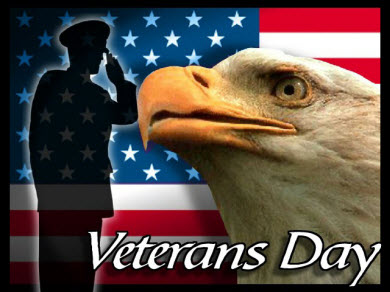3 Leadership Lessons from America’s Veterans
 On this Veteran’s Day, the Center for the Public Trust (CPT) pauses to honor and recognize the brave individuals who proudly served in the United States military. Although World War I officially ended on June 28, 1919 with the signing of the Treaty of Versailles, the fighting actually stopped in 1918, during the eleventh hour of the eleventh day of the eleventh month. For that reason, Veteran’s Day is always held November 11 each year.
On this Veteran’s Day, the Center for the Public Trust (CPT) pauses to honor and recognize the brave individuals who proudly served in the United States military. Although World War I officially ended on June 28, 1919 with the signing of the Treaty of Versailles, the fighting actually stopped in 1918, during the eleventh hour of the eleventh day of the eleventh month. For that reason, Veteran’s Day is always held November 11 each year.
It’s ironic to me that soldiers fight to achieve peace. It seems counterproductive. But, the truth is sometimes temporary battles are necessary in order to obtain long-term benefits. A battle won today can mean peace for years to come. Below are three conflict management lessons we can learn from America’s veterans:
1. Determine if Conflict is Healthy
Although we often think of conflict as a negative aspect of business, it can also be a productive event, which positively impacts the organization. It can lead the improvement of products, processes and office dynamics. If you cannot determine how addressing the conflict will help your team better achieve its mission, then it may not be a battle worth fighting.
2. Identify the Enemy
 Too often, employees engage in positional battles that hinder the company from achieving its mission. Even in war, the objective is not simply to kill or capture people from the other country. The real goal is to protect one’s country and influence the other country’s leadership to change policies or practices that pose a threat.
Too often, employees engage in positional battles that hinder the company from achieving its mission. Even in war, the objective is not simply to kill or capture people from the other country. The real goal is to protect one’s country and influence the other country’s leadership to change policies or practices that pose a threat.
The negative policy or behavior is the enemy, not the people who support it. Incorrectly identifying your enemy as the other person may distract you from achieving the ultimate goal. Although some people may be offended or eliminated during the process of correcting behavior, harming the other person should never be your objective.
3. Determine if the Conflict Benefits Others
Conflicts and resolutions that only affect you may not be productive. For example, complaining that you want your parking space to be closer to the building than your coworkers’ spaces, only benefits you. In fact, it will negatively impact the other employee who gives up a parking space for you.
Conversely, if multiple employees express concern over their safety when leaving work, due the distance between their parking spots and the building, this conflict should be addressed. If safety concerns are the root of the problem, then the company may be able to hire a security guard and improve the lighting in the parking lot. Take on conflicts where the benefits of finding a resolution will affect several others. This will help everyone stay more focused in accomplishing your mission.
Again, the CPT thanks the brave veterans who have served America proudly. We appreciate their service, their sacrifices and their leadership lessons.
Always remember, Leadership is a Lifestyle.
– Ryan W. Hirsch
Program Manager, NASBA Center for the Public Trust
